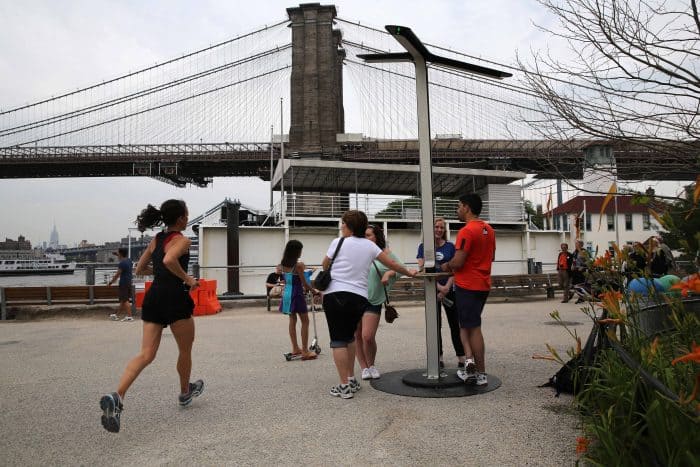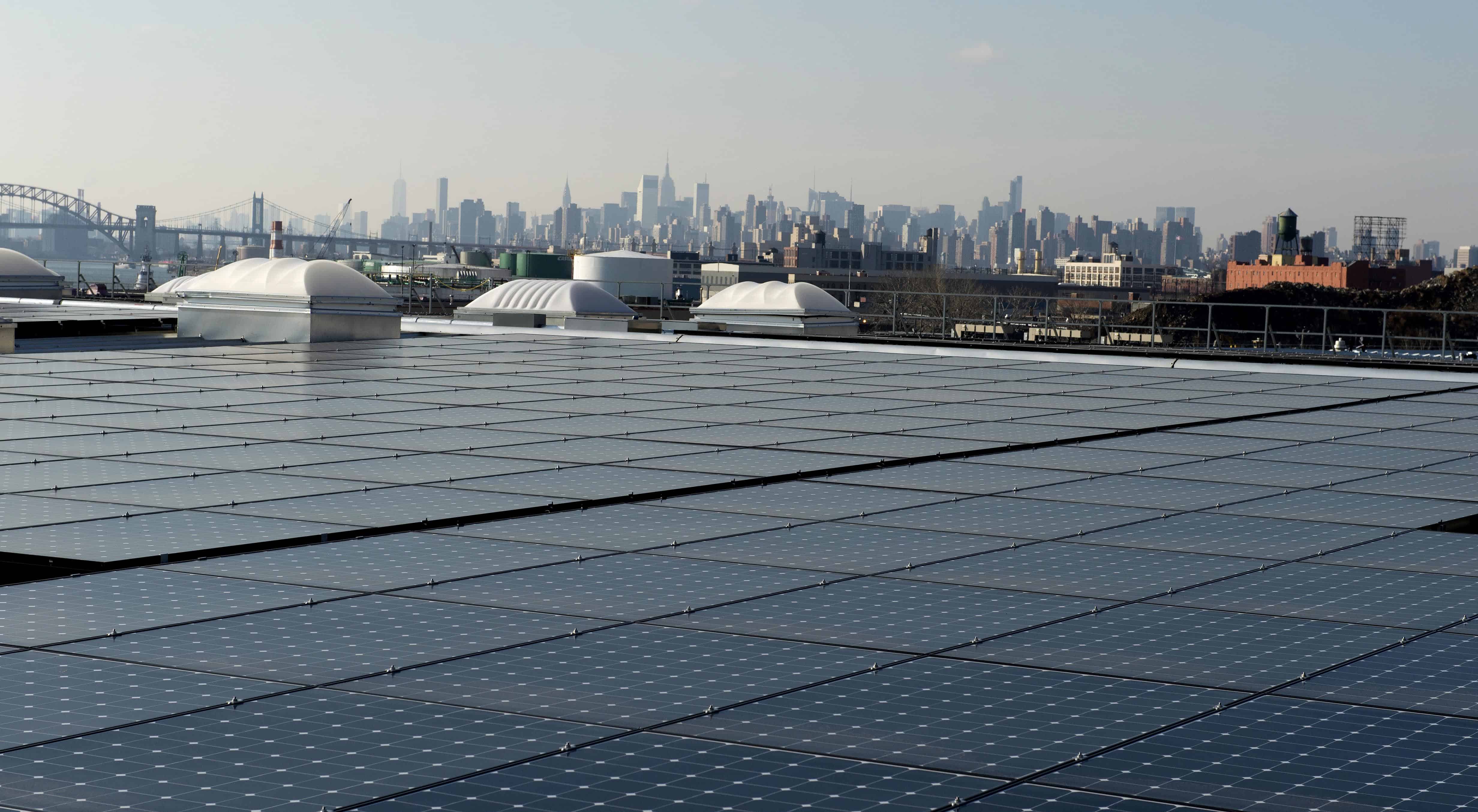NEW YORK — Brooklyn’s trendy hipster hangouts may soon offer more than craft beers, artisanal cheese and organic produce: They’ll brag of being powered by locally sourced electricity, from their own solar panels or maybe from batteries down the street.
Instead of a microbrewery tour — how about a tour of local micro power grids?
New York state officials say small-scale power production is the wave of the future. The big power plants will still be there, and the local utility will still run wires to your house. But your power supply will be a mix of what you and your neighbors produce from technology like rooftop solar and what you buy from the electrical grid.
These new technologies, including rooftop solar, are pushing New York regulators to come up with new rules for buying and selling electricity and maintaining the electrical grid. To make it happen, the state Public Service Commission has started a proceeding called Reforming the Energy Vision — REV for short. REV aims to make it easy for utilities, homeowners and businesses to use the new technology.
The rules are expected to be mostly in place early next year. After that, “we foresee that the pace of change can be fairly rapid,” said Audrey Zibelman, the commission’s chair.
Other U.S. states are dealing with the same issues, but not as comprehensively. New York is among a number of states requiring net metering, which gives homeowners credit for solar power they put into the grid. Many also have rules saying a certain percentage of electricity must come from solar and other renewable resources. Maryland says 20 percent of electricity must be from renewable sources by 2022. California says 33 percent of its power must be renewable by 2020.
As renewable technology grows cheaper and more popular, it could outpace the ability of regulators and utilities to deal with it.
Related: The battle over distributed generation of electricity in Costa Rica

In Hawaii, solar power is already cheaper than power sold by the local utilities. Statewide, 12 percent of residential utility customers have rooftop solar panels, compared with 0.5 percent in the rest of the United States. Hawaiian officials were unprepared last year when residents began producing more electricity than the power grid could absorb, forcing utility companies to curb new solar installations.
New York’s high power prices could also lead to a solar boom. In April, New York residents paid an average 17.77 cents for a kilowatt hour of electricity. That was 40.6 percent more than the national average, federal data shows.
Prices are even higher in the New York City area. Con Edison, the city’s power company, for years has charged the highest per-kilowatt-hour prices of any big-city utility. Solar production in Con Ed’s territory has more than doubled in the last 18 months.
New York is trying to get ahead of these issues by working out how utilities and their customers will use the new renewable technology, and how customers will pay for it. “This is pro-consumer. It is pro-innovation, it is pro-economic growth, and it reduces emissions,” said Richard Kauffman, New York Gov. Andrew Cuomo’s top energy aide.
New York’s push is also driven by fear of another weather-induced grid calamity like the 2012 Hurricane Sandy disaster that darkened much of Manhattan for days. Kauffman said that after Sandy, Cuomo told him that in the era of the iPod, “the utility industry was still in the vinyl record age.” Cuomo took Sandy as a sign the grid needs to be modernized.
Under the rules being considered by the Public Service Commission, Con Ed, a gas-and-electric utility that serves New York City and affluent Westchester County, could be called upon to provide new services, such as microgrids, which will let homes and businesses in a neighborhood share the power they produce. Microgrids might be separated from the main power grid in widespread power outages, allowing several buildings to share the power they produce.
“Exactly how rate structures would work — how different costs and benefits would be allocated within that structure — is still being worked out,” said Matt Ketschke, Con Ed’s vice president for distributed resource integration.
© 2015, The Washington Post







